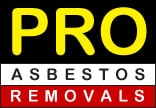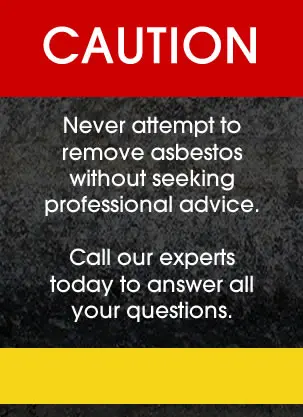About Asbestos
The Complete Guide To The History, Dangers & Procedures
History Of Asbestos
Asbestos is a naturally occurring mineral that boasts of having great fire and heat resistant properties and has a rich history that dates back to the prehistoric times. It is believed that on the ancient Greek island of Evvoia was the place where the first site of asbestos was discovered. In fact, the word “asbestos” itself has been derived from a Greek word (ἄσβεστος) that means “unquenchable”. Since the ancient times, people were in awe of this mineral’s fire resistant capability and were heavily used as a building material in the Roman Empire.
Asbestos was also utilized to manufacture fabric that would be used in various styles of clothing and other textiles. Legend has it that early Egyptians used clothes made of asbestos to cover the dead bodies before modifying them, believing that it would last for many centuries to come. While many civilizations such as the Egyptians, Romans, and Greeks, used the unique properties of asbestos to their advantage, the harmful effects of mining this mineral were observed in the ancient stone quarries. A Greek geographer, Strabo, first noticed a sickness of the lungs among slaves who wove asbestos into different clothes.
Many centuries passed, but the use of this mineral continued and even saw a rise in popularity in the industrial age as its fire retardant properties made it a favorite in industries dealing with automobiles and construction. Asbestos was not only found in factories, but also in chemical and oil refineries, shipyards, and railroad cars. Due to its extensive usage, tens of thousands of soldiers would be exposed to the harmful effects of this mineral a daily basis, and many would experience the same symptoms that plagued others many centuries ago who worked in the mines.
The adverse health effects of exposure to asbestos once again became apparent in the early 1900s. People who are susceptible to asbestos-related diseases were those exposed to the mineral, which was being abundantly used from the 1940s and throughout the 70s. It was found that shipyard employees were most likely to develop mesothelioma cancer, which was a direct cause of exposure to asbestos.
Australia has recorded the second largest figure of mesothelioma death rate in the world, following the United Kingdom. Mesothelioma is a rare type of cancer caused by exposure to asbestos and has been leaving a mark of taking away the lives of more than 10,000 people since the early 1980s. According to cancer researchers, and the addition of 25,000 people are expected to succumb to this disease over the upcoming four decades. According to the Australian Mesothelioma Registry, around 641 Australians lost their lives in 2014. This alarming figure is indicative of the fact that the death toll was increasing over time, and the number of mesothelioma cases in the country is expected to reach up to 18,000 by the year 2021.
Types of asbestos
Asbestos is a term that is commonly used as a reference to 6 unique substances that belong to the amphibole and Serpentine mineral families that include Chrysotile, Amosite, Crocidolite, Anthophyllite, Tremolite, Actinolite. The Serpentine group of asbestos possess curly fibres and a layered structure. Chrysotile is the only variety belonging to the Serpentine group that was used in buildings in the US. Amphibole, on the other hand, is characterized by a long chainlike structure of fibres that are straight, sharp, and easy to inhale. This group contains the other five remaining varieties of asbestos. Crocidolite and amosite were widely used until the early 1980s, and it is also said that amosite is the second most common type of asbestos that are likely to be found in buildings.
Health dangers of asbestos
• Chrysotile: this is the type of asbestos that is commonly found and is often used today in ceilings, roofs, floors, and walls of homes and business places. This asbestos was also used in pipe insulation, automobile brake linings, and many other places. Studies have shown that this asbestos type is less harmful than the others.
• Crocidolite: crocidolite is perhaps the most dangerous asbestos type as it has been held accountable for more deaths than any other kind. It has fragile fibres that get inhaled easily when airborne and become lodged in the lining of the lungs. It is also known as blue asbestos and is commonly found in the mining sites of Australia, Bolivia, and Southern Africa.
• Amosite: amosite offers good tensile strength and resistance to heat due to which it is often used in manufacturing cement sheets, electrical installation, plumbing installation, and roofing products. American Cancer Society has stated that exposure to amosite asbestos creates a higher risk of developing mesothelioma, lung cancer, and asbestosis. Commercially referred to as Brown asbestos, it was found in the Transvaal province mines of South Africa.
• Anthophyllite: This variety is also known to cause diseases, but studies have shown the risk of developing mesothelioma from exposure to anthophyllite is comparatively low than exposure to other types. This is a rare variety of asbestos that were first mined in Finland, in 1890. Traces of anthophyllite may be found in talcum powder and products containing the mineral vermiculite.
• Tremolite: this asbestos variety has large commercial utility as it possesses properties of being resistant to heat apart from being durable and flexible. It can also be woven and spun into cloth. Tremolite is rarely found on its own and is often present in other minerals such as vermiculite and talc. People who work as Talc miners are at a higher risk of developing acute respiratory conditions and lung cancer.
• Actinolite: this is an amphibole that can appear in multiple forms and in many colors that include grey, white, green, or brown. This Asbestos is made up of other minerals and substances like Silicon Valley calcium, iron, magnesium, hydrogen, and oxygen. It is used in structural fireproofing, insulation material, and in concrete construction materials.
Western Australia Government Requirements for Handling Asbestos
Even though import, manufacture, and use of asbestos have been banned in Australia, they were extensively used in Western Australia between the mid-1980s and 1990 in constructing houses. Asbestos products, more commonly corrugated flat asbestos cement sheets were used in fencing and/or for building purposes. Many properties in Western Australia are still likely to have contaminated asbestos remains. These sheets are unsafe to be drilled, cut, machine, or sanded as it might lead to the release of the asbestos fibres into the air.
Since working with asbestos is unavoidable, the Western Australia government has implemented the Code of Practice for the Safe Removal of Asbestos 2nd Edition [NOHSC: 2002(2005)] and the Code of Practice for the Management and Control of Asbestos in Workplaces [NOHSC: 2018(2005)] which must be strictly followed by those working with asbestos. The title=”Worksafe Regulations – Western Australia” rel=”nofollow”Occupational Safety and Health Regulations 1996 state that:
- Asbestos existing at workplaces must be correctly identified, and the risks carefully assessed
- The concerned authority must have a license that permits them to remove friable asbestos from material or for removal of non-friable asbestos containing materials that exceed 10m2
- The work areas that were exposed to asbestos must be left thoroughly cleaned
- People must not be brought to the exposure of asbestos dust for any reason
- Care should be taken for disposing of waste asbestos
- In places of asbestos exposure that may pose risk to health, proper surveillance must be provided
- The records must be preserved, and WorkSafe notified if there is any incident of asbestos exposure at a workplace
Asbestos Removal Procedures
It is extremely important that Safe Work procedures are followed when carrying out asbestos-related work or removing asbestos to prevent the fibres from becoming airborne. Although there is no legal law barring the householders from carrying out asbestos removal, it is advised that they employ the services of professionals or stick to careful handling and safety adherence practices.
Asbestos waste is hazardous and needs to be disposed at a particular site that has been approved by the area’s local council. Each council has its own rules and how it deals with asbestos waste.
In short, the procedure of asbestos removal can be shortly explained in the following steps:
Preparation
Before commencing the task, it is essential that you obtain every necessary precaution in order to protect yourself and your neighbors from the related hazards of working with asbestos.
Drilling
When drilling into asbestos of non-viable variety, use a thickened substance such as shaving foam to keep the airborne fibres under control. When drilling into non-friable asbestos, use an H rated industrial grade HEPA filter vacuum to keep the airborne fibres under control.
Removal
Different areas of asbestos have different cleaning procedure. To safely remove asbestos and ACM backing, first, ensure that the risks have been adequately assessed. Also, adhering to Safe Work procedures is a must to make sure that the health of the cleaning personnel, as well as those around them, are not put into any risk.
Cleanup and disposal
As discussed previously, proper cleaning of the work area and thorough decontamination is necessary to ensure that no hazardous waste material residue has been left behind. The asbestos should only be disposed at certain designated places so that they do not pose any health risk.
Asbestos Testing Procedures ( at NATA Accredited lab)
Asbestos fibres have been historically used in a variety of material types and applications. Since there is a significant risk in undertaking asbestos inspection and sampling by untrained people, laboratory testing often becomes necessary to determine which materials contained asbestos and in what concentration.
There are many asbestos laboratory testing service providers who are accredited by the National Associate of Testing Authorities (NATA), whose job is to analyse different types of materials and issue an analysis certificate in accordance with NATA provisions.
The following testing methods are accredited by NATA labs to check for environmental hazards related to asbestos and other fibres:
• Asbestos fibre counting –The airborne asbestos fibres are estimated by utilising the membrane filter method as described in the National Occupational Health & Safety Commission Guidance Note (2005) and other in-house laboratory methods.
• Synthetic mineral fibre counting – Estimation of synthetic mineral fibres that are airborne by using the membrane filter as described in the National Occupational Health & Safety Commission Guidance Note (June 1989)
• Asbestos fibre identification – qualitative identification of amosite, chrysotile, organic fibres, and synthetic mineral fibres in bulk by polarised light microscopy and other in-house laboratory methods.
It is recommended that asbestos inspection and testing procedures the only performed by bodies accredited by NATA and in compliance with the rules regulations. Asbestos reports of safe environments are produced by the provisions of the National Occupational Health and Safety Commission Code of Practice for the Management and Control of Asbestos in Workplaces [NOHSC: 2018 (2005)].
Conclusion
Throughout the progress of civilisation, asbestos has played a significant role in shaping architecture and industries, but the potential health risks of dealing with this substance have proven to be far worse than its benefits. This is the reason import and use of asbestos have been banned by the Australian government. The Western Australian governments have also made it mandatory for asbestos handling and cleaning companies to adhere to a code of conduct due to the risks associated with this line of work.
By now, it has probably become apparent that asbestos is a substance that carries severe health hazards that can be life-threatening. It is therefore suggested that people hire a professional company that has the skills and expertise of handling and cleaning the areas by polluted by the substance. Professional asbestos removal servicemen possess the necessary training to inspect safely and dispose of the harmful substance so as to minimise the dangers of exposure to human health and the environment.
One should never put their life at risk by trying to deal with this substance as the consequences can be devastating. If you are ever in need of removal of asbestos, be it for house remodelling or any other reason, employ the services of a professional for safe handling.
Please contact us if you have any questions or need further information.


